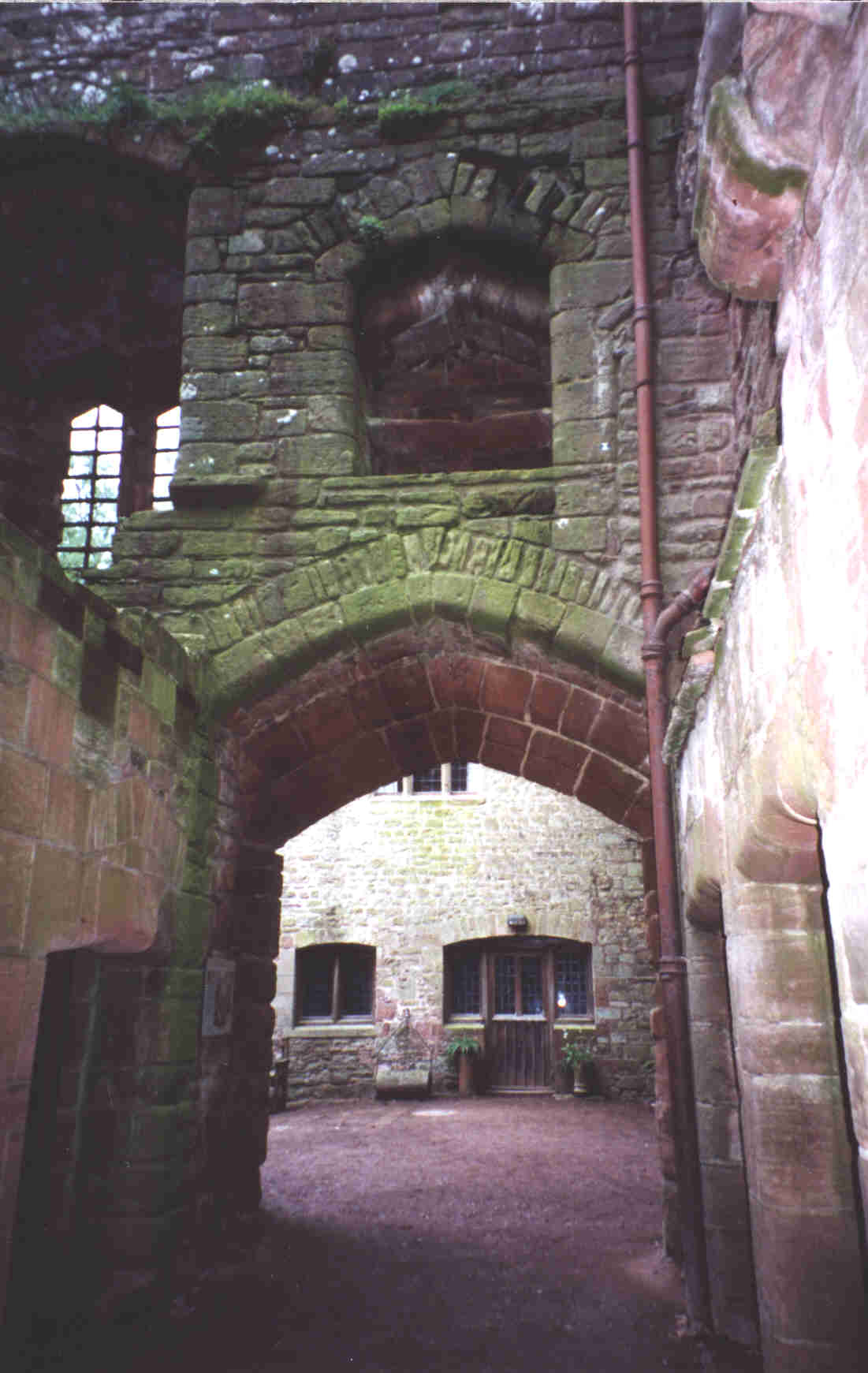 |
 |
 |
 |
 |
 |
 |
 |
 |
 |
 |
 |
 |
 |
 |
 |
 |
 |
 |
 |
 |
 |
 |
 |
 |
 |
 |
 |
 |
 |
 |
 |
 |
 |
 |
 |
 |
 |
 |
 |
 |
 |
|
|
 |
|
|
|
 |
|
|
|
 |
|
|
|
|
|
|
|
ST. BRIAVELS |
|
|
|
|
|
|
|
|
 |
|
 |
|
|
|
|
|
|
 |
|
|
 |
|
|
|
|
|
|
|
|
|
|
|
|
|
|
St. Briavel's (pronounced "Brevels") stands on the edge of a limestone plateau above the valley of the River Wye and overlooks an ancient ox-bow of the river. It lies on the B4228 Chepstow-Coleford road. The village is sheltered behind the crumbling walls of its 12th century castle which is now a flourishing Youth Hostel.
Like so many settlements in these islands, little is known for certain about the origin of St. Briavels, or about the period between the withdrawal of the Roman legions and the coming of the Normans in 1066. It is thought that it takes its name from a much-traveled missionary, St. Brieve, who must have journeyed far and wide, for the name appears in places as far apart as Gloucestershire, Wales, Cornwall and Brittany.
In these intervening years Offa, King of Mercia, built his famous dyke from the mouth of the Wye near Chepstow to Chester, and the remains of that dyke could still be seen in Lindors Woods at the beginning of this century. What is certain is that William the Conqueror thought it an ideal site for one of the many castles built from Chepstow to Chester to check the intrusion of the warlike Welsh tribesmen into the more peaceful areas east of the Severn and Wye rivers.
At Windward, the highest point in the parish, the land rises to eight hundred feet above sea level; the castle itself is somewhat lower at six hundred feet and nestles into the hillsides, with a commanding view of the Wye Valley between Tintern and Redbrook. |
|
|
|
|
|
|
 |
|
|
|
|
|
|
|
|
|
|
|
|
Rear view of St. Briavels depicting the symbolic hunting horn atop the spire. |
|
|
|
|
|
|
|
|
|
|
|
The castle and church built between 1070 and 1090 must have been the site of a considerable community, for the castle was the home of the Constable of the Forest of Dean, a region stretching northwards and eastwards toward the city of Gloucester. Cut off from the rest of England by the tidal Severn River to the east and the treacherous Wye to the west, the Forest was in many ways more isolated than most other parts of the country. As a result, this area produced a culture, language and way of living peculiarly its own. Whereas people in the Forest were employed in mining for coal and iron, quarrying and forestry, St. Briavels was almost entirely pastoral. |
|
|
|
|
|
|
|
|
|
|
|
 |
|
|
|
|
|
|
|
North Entrance to St. Briavels Castle.
Photo taken May 1999 |
|
|
|
|
|
|
|
|
|
|
|
|
|
|
|
|
 |
|
|
|
|
|
|
|
|
|
|
|
|
|
|
View St. Briavels Location Near Chepstow on Map |
|
|
|
|
|
|
|
|
|
|

|
|
|
|
|
|
|
Home Page |
|
|
|
|
|
|
More About St. Briavels |
|
|
|
|
|
|
|
|
|
|
|
|
|
|
|
|
|
|
|
 |
|
|
|
|
|
|
|
 |
|
|
|
|
|
|
|
|
 |
|
|
|
|
|
|
|


